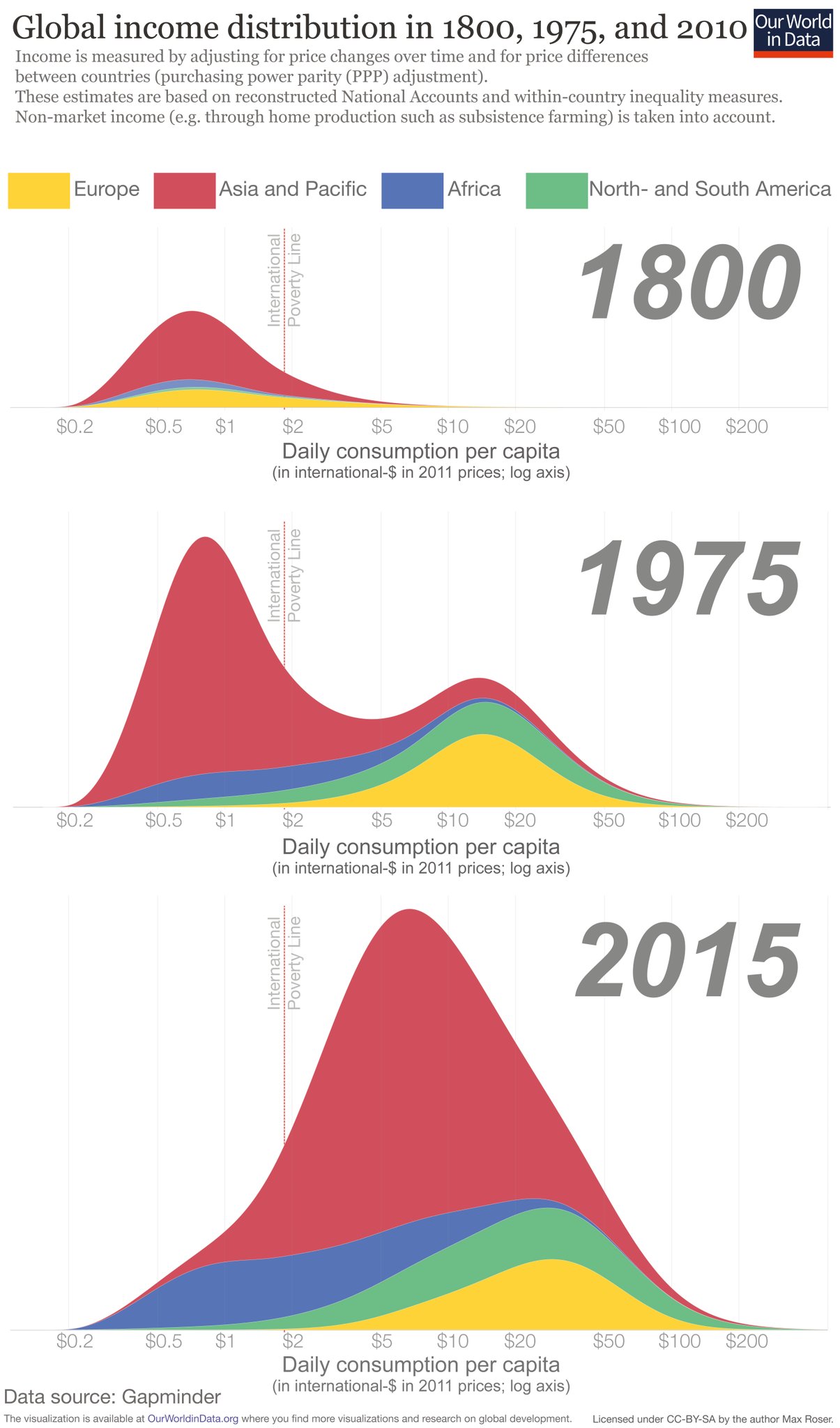

In this Jan. 22, 2003 file photo, a Chinese shopkeeper stands behind a row of beef products at an open air market in Beijing, China. China will finally open its borders to U.S. beef while cooked Chinese poultry is closer to hitting the American market as part of a U.S.-China trade agreement. Trump administration officials hailed the deal as a significant step in their efforts to boost U.S. exports and even America’s trade gap with the world’s second-largest economy. (Photo: AP)
For almost all of human history, the norm for 99 percent of the population was poverty and deprivation.
Then, starting a few hundred years ago, something amazing happened. There was a sudden explosion of prosperity. In past years, I’ve shared two videos explaining this remarkable phenomenon, which is linked to the unleashing of free markets, the rule of law, and property rights.
- A video from Marginal Revolution University narrated by Professor Don Boudreaux.
- A video from Learn Liberty narrated by Professor Deirdre McCloskey.
Now let’s look at some similar data, but for a different purpose. Here are some fascinating charts put together by Professor Max Roser of Oxford. As you can see at the top, almost everybody used to be poor. But as you look below, you’ll notice that an increasing share of the world’s population is middle class or above.
There are three takeaways from this data.
The first conclusion, as noted above, is that the world is getting richer. Hundreds of millions of people have been lifted out of extreme poverty. That’s wonderful news.
The second conclusion, as seen by the red section of the chart, is that a modest bit of reform in India and China has paid big dividends (and, given the success of Indian-Americans and Chinese-Americans, I imagine those nations could become much richer with additional market-friendly reform).
But I want to focus today on a third conclusion, which is that pro-growth policies are the best way to help the poor, not redistribution driven by a fixation on inequality.
More specifically, notice how there was a lot of inequality in the chart for 1975, particularly compared to the chart for 1800. My leftist friends, with their flawed belief that the economy is a fixed pie, would instinctively assume that Europe and the Americas somehow became comparatively rich because Asia and Africa stayed comparatively poor.
In reality, the real story is that the economies of the western world expanded because they found the recipe for growth and prosperity.
And the 2015 chart shows that the rest of the world is finally moving in that direction as well (as confirmed by long-run data from Economic Freedom of the world).
What would have happened, however, if our friends on the left had control of global policy in 1975 and imposed high tax rates in order to redistribute lots of income from rich nations to poor nations?  In other words, what would have happened if they imposed on the world the policies that they try to impose in various nations?
In other words, what would have happened if they imposed on the world the policies that they try to impose in various nations?
If that had happened, the world economy would have underperformed. As Thomas Sowell has explained, such policies penalize productive behavior and subsidize unproductive behavior.
It’s possible that such policies would have reduced inequality, to be sure, but global income would have been far lower.
Fortunately, we avoided that outcome and instead enjoyed a reduction in inequality caused by better policy and growth-driven convergence.
Which is exactly the lesson for helping the less fortunate in individual nations.







